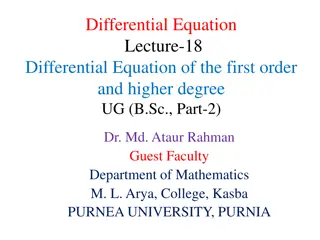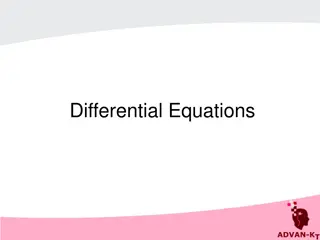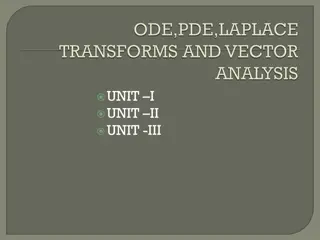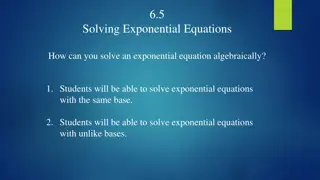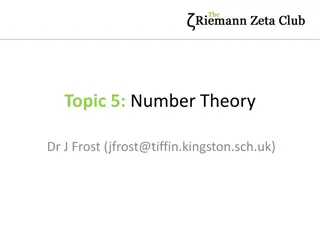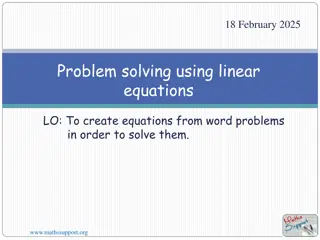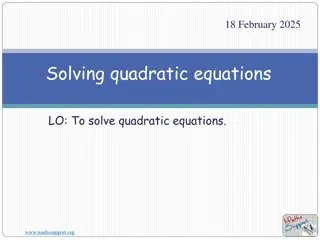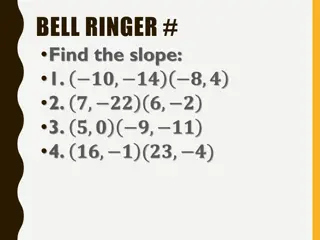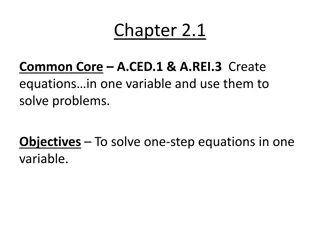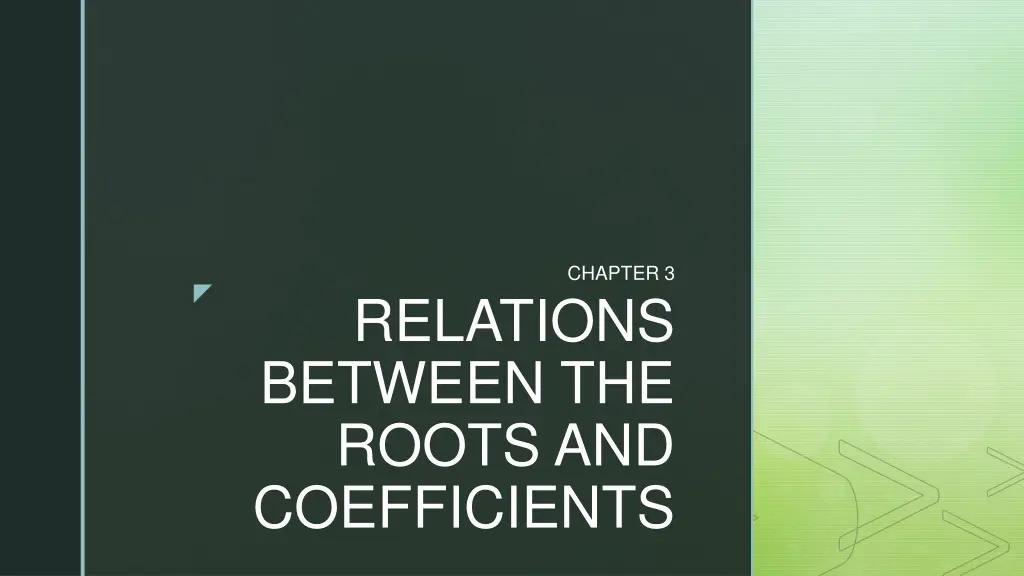
Quadratic Equations and Vieta's Formula
Explore the relationship between roots and coefficients in quadratic equations, Vieta's formula, and how it relates coefficients to the sums and products of roots. Discover how Vieta's formula can be a powerful tool in solving polynomial equations, offering shortcuts to finding solutions quickly. Uncover the connection between roots and coefficients in algebraic polynomials, showcasing the importance of understanding these fundamental mathematical relationships.
Download Presentation

Please find below an Image/Link to download the presentation.
The content on the website is provided AS IS for your information and personal use only. It may not be sold, licensed, or shared on other websites without obtaining consent from the author. If you encounter any issues during the download, it is possible that the publisher has removed the file from their server.
You are allowed to download the files provided on this website for personal or commercial use, subject to the condition that they are used lawfully. All files are the property of their respective owners.
The content on the website is provided AS IS for your information and personal use only. It may not be sold, licensed, or shared on other websites without obtaining consent from the author.
E N D
Presentation Transcript
CHAPTER 3 RELATIONS BETWEEN THE ROOTS AND COEFFICIENTS
INTRODUCTION The relationship between roots and coefficients is, In a quadratic equation the sum of the roots is equal to the negative of the coefficient of second term divided by the coefficient of first term. while the product of roots is equal to the third term divided by the first term.
Vieta's formula relates the coefficients of polynomials to the sums and products of their roots, as well as the products of the roots taken in groups. For example, if there is a quadratic polynomial f(x) = x^2+2x -15f(x)=x2+2x 15, it will have roots of x=-5x= 5 and x=3x=3, because f(x) = x^2+2x-15=(x- 3)(x+5)f(x)=x2+2x 15=(x 3)(x+5). Vieta's formula can find the sum of the roots \big( 3+(-5) = -2\big)(3+( 5)= 2) and the product of the roots \big(3 \cdot (-5)=-15\big)(3 ( 5)= 15) without finding each root directly. While this is fairly trivial in this specific example, Vieta's formula is extremely useful in more complicated algebraic polynomials with many roots or when the roots of a polynomial are not easy to derive. For some problems, Vieta's formula can serve as a shortcut to finding solutions quickly knowing the sums or products of their roots.
If 1,2,3 ...nare the roots of the equation f(x)= a0xn+a1xn-1+a2xn-2+...+an-1x + an=0, then f(x)= a0(x- 1)(x- 2)(x- 3)...(x- n) Equating both the RHS terms we get, a0xn Comparing coefficients of xn-1 +a1xn-1 +a2xn-2+...+an-1x + an = a0(x- 1)(x- 2)(x- 3)... (x- n) on both sides, we get S1 = 1 + 2+ 3 +... + n = i = -a1/ a0 or, S1= - coeff. of xn-1/coeff. of xn



